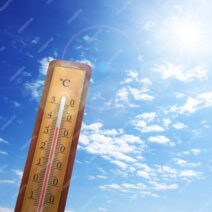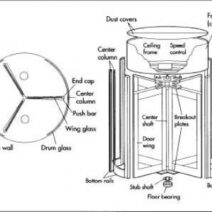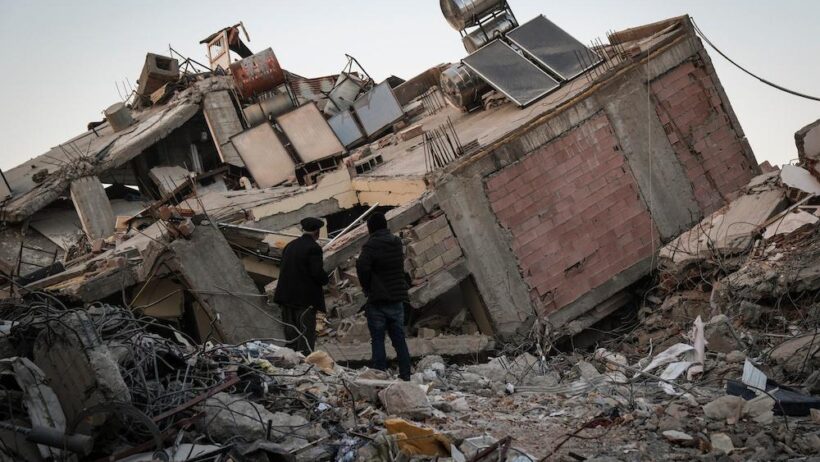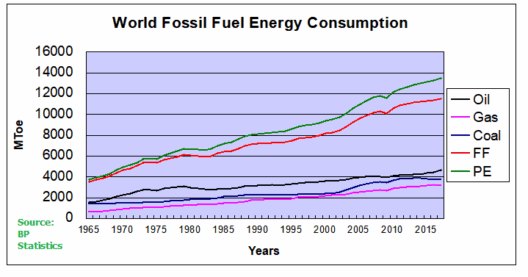In recent years, the interplay between climate change and seismic activity has garnered increasing attention from both the scientific community and the general public. The notion that rising global temperatures and shifting climatic patterns could have profound implications for geological stability is a captivating idea that taps into humanity’s inherent desire to comprehend the natural world. While earthquakes have long been associated with tectonic plate movements, could it be that the very atmosphere we inhabit also plays a pivotal role in influencing these cataclysmic events? As we delve deeper into this complex relationship, it becomes evident that the nuances are as intricate as the layers of the Earth itself.
At the heart of this inquiry lies the understanding of what comprises climate change. Primarily driven by anthropogenic factors such as greenhouse gas emissions, climate change leads to an array of environmental alterations—including escalating temperatures, shifting precipitation patterns, and melting ice caps. It is crucial to grasp that while these phenomena pertain to atmospheric and surface changes, the Earth’s crust remains susceptible to the stresses imposed by these environmental transformations.
A significant aspect to consider is the role of glacial melt in seismic activity. Research has indicated that as glaciers and ice sheets diminish in mass, the reduction of pressure on the Earth’s crust can precipitate what is known as “glacial isostatic adjustment.” This process, characterized by the Earth’s crust rebounding in response to the loss of weight from the overlying ice, can lead to increased seismicity in previously stable regions. It is a paradoxical situation: as the climate warms and ice retreats, the destabilization of the crust can, counterintuitively, give rise to earthquakes.
Furthermore, alterations in precipitation patterns invite scrutiny. Regions experiencing intense rainfall or prolonged droughts may find their geological stability compromised. Prolonged periods of heavy rainfall can lead to soil saturation, increasing the likelihood of landslides and subsidence—natural phenomena that, while not earthquakes in the traditional sense, underscore the delicate balance between hydrological cycles and geological integrity. The subsequent changes in groundwater levels can also exert additional pressure on fault lines, potentially triggering seismic events.
The phenomenon of induced seismicity deserves particular attention in this discussion. Human activities—specifically those related to resource extraction such as fracking, mining, and geothermal energy production—often lead to the injection of fluids into the Earth, which can alter pore pressure and reduce friction along fault lines. This artificial manipulation of geological structures raises a pressing question: how might climate change—by intensifying resource demands for energy production or water management—exacerbate these activities and, in turn, contribute to an increase in earthquake frequency?
Beyond these tangible mechanisms, a psychological and cultural perspective also emerges. The awe surrounding seismic disasters combined with climatic anomalies fosters a societal interest that can lead to a deeper inquiry into causation. The fear of the unpredictable nature of these events echoes throughout human history; our fascination with them often stems from their suddenness and magnitude. This interplay of fear, fascination, and scientific inquiry potentially drives public and academic interest in answering whether climate change could amplify the striking unpredictability of earthquakes.
Yet, the research community is divided on the certainty of climate change’s influence on seismic activities. While empirical studies continue to unveil pertinent data, the scientific consensus remains cautious. There is no unequivocal evidence that directly correlates climate change with increased earthquake magnitude or frequency universally. Instead, the evidence tends to suggest localized impacts where significant climatic changes intersect with geological instability. This paradox reveals the complexity of Earth’s systems—where interconnectivity often leads to unexpected outcomes.
Moreover, the socio-economic implications cannot be ignored. Communities in regions susceptible to both climate change and seismic activity face compounded risks. Urban planning, disaster preparedness, and resource allocation are all exacerbated by the dual pressures of climate variability and geological unpredictability. Governments and policymakers must acknowledge these intersections, promoting resilient infrastructures and effective response strategies that recognize the potential for such confluence of risks.
In conclusion, the hypothesis that climate change affects earthquake dynamics invites an interdisciplinary discourse that transcends mere geological inquiry. The intricate relationship between our changing climate and the seismic activities on our planet offers profound insights into both natural phenomena and human resilience. It challenges us to look beyond singular narratives and consider the confluence of environmental, geological, and socio-economic factors at play. As the Earth’s climate continues to morph under our watch, the imperative to understand these connections becomes not just a scientific pursuit, but a necessity for the survival of vulnerable communities. Embracing this complexity, we can strive to foster awareness and catalyze change, cultivating a more robust approach to the multifaceted challenges posed by a changing world.








